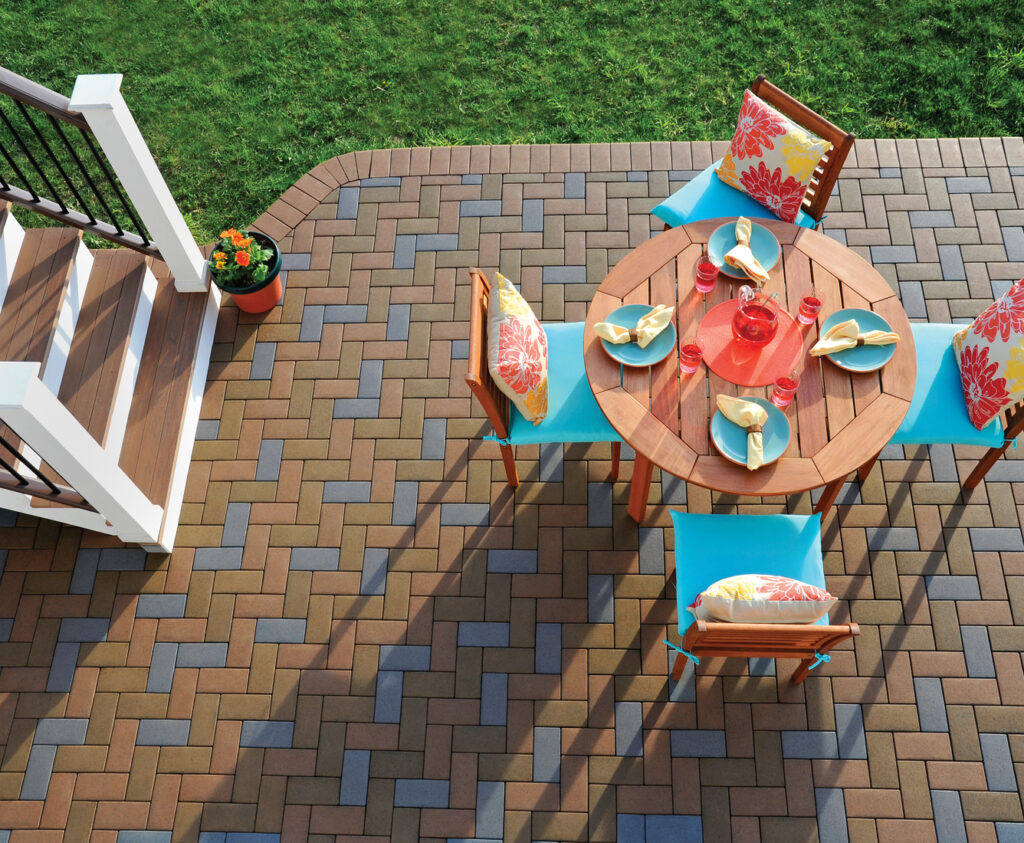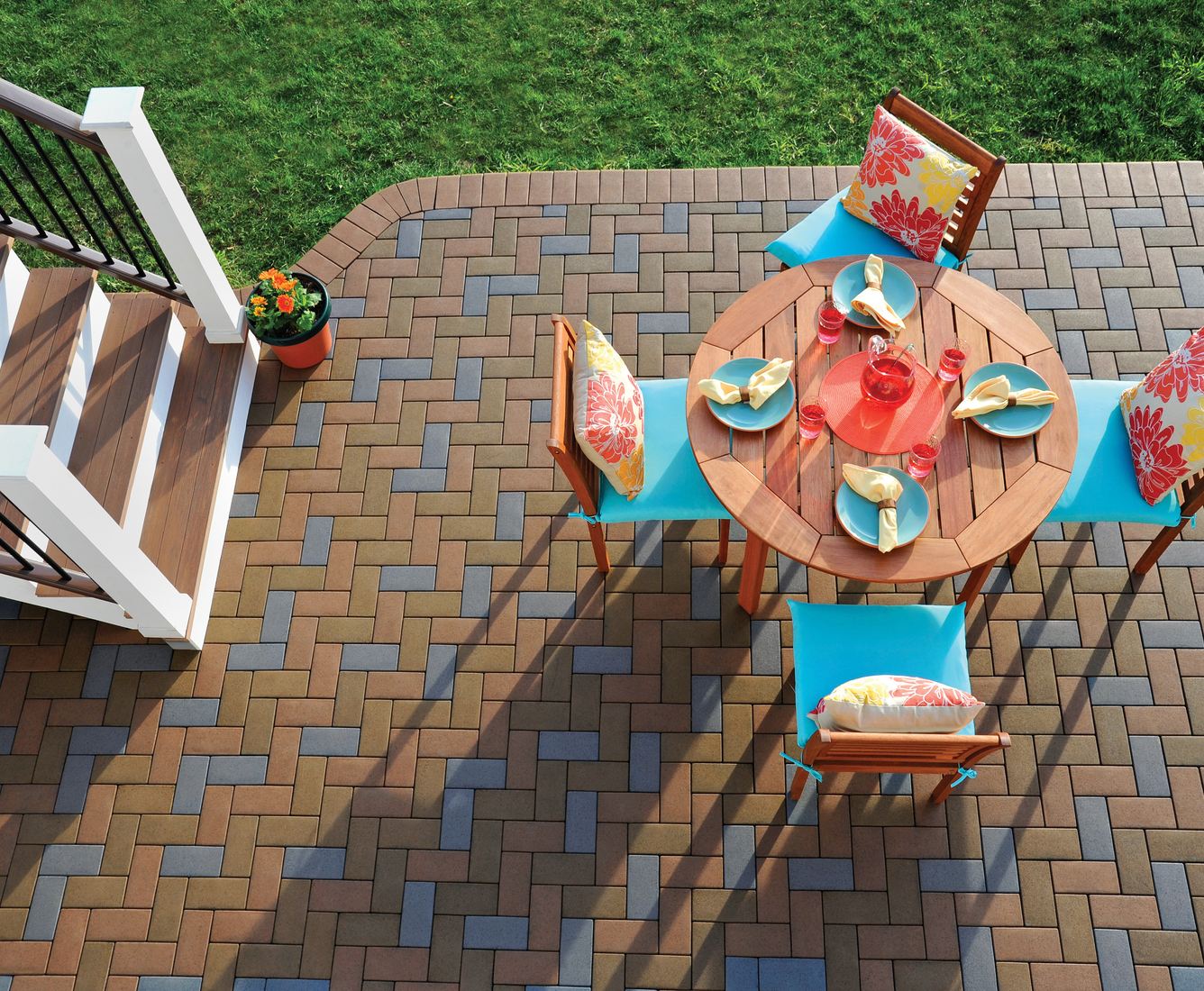
Concrete Patio Resurfacing: A Comprehensive Guide to Revitalizing Your Outdoor Space
Is your concrete patio looking tired, cracked, or simply outdated? Before you consider the expensive and disruptive option of a complete replacement, explore the possibilities of concrete patio resurfacing. This cost-effective and transformative solution can breathe new life into your outdoor living area, enhancing its aesthetic appeal and extending its lifespan. This guide provides a comprehensive overview of concrete patio resurfacing, covering everything from preparation and material selection to application techniques and maintenance tips.
Understanding Concrete Patio Resurfacing
Concrete patio resurfacing involves applying a new layer of material over the existing concrete surface. This process effectively hides imperfections, repairs damage, and provides a fresh, updated look. Unlike replacing the entire patio, resurfacing is typically faster, less expensive, and less disruptive to your landscaping. It’s a practical solution for patios with surface-level issues, such as cracks, stains, or spalling. However, it’s crucial to assess the underlying structural integrity of the concrete before proceeding. If the patio has significant structural problems, resurfacing may only provide a temporary fix.
When to Consider Concrete Patio Resurfacing
Concrete patio resurfacing is an ideal solution for various scenarios, including:
- Cracked or Damaged Surfaces: Hairline cracks, minor spalling, or surface imperfections can be effectively concealed with a resurfacing layer.
- Stained or Discolored Concrete: Resurfacing can cover up unsightly stains from oil, rust, or other substances, providing a clean, uniform appearance.
- Outdated or Unattractive Appearance: If your patio’s style is no longer appealing, resurfacing allows you to update its look with various textures, colors, and patterns.
- Cost-Effective Alternative to Replacement: Resurfacing is significantly cheaper than tearing out and replacing the entire concrete patio.
Preparation is Key: Getting Your Patio Ready for Resurfacing
Proper preparation is essential for a successful concrete patio resurfacing project. The steps involved typically include:
Cleaning the Surface
Thoroughly clean the existing concrete surface to remove dirt, debris, oil, grease, and any loose particles. A pressure washer is highly recommended for this step. For stubborn stains, use a concrete cleaner or degreaser.
Repairing Cracks and Damage
Fill any cracks or holes with a concrete patching compound. Follow the manufacturer’s instructions for application and curing. For larger cracks, you may need to use a concrete crack filler or epoxy injection.
Etching the Concrete
Etching the concrete surface creates a slightly rough texture that allows the resurfacing material to bond properly. This can be done using a chemical etcher (muriatic acid) or by mechanically grinding the surface. Always follow safety precautions when working with chemicals.
Applying a Bonding Agent
A bonding agent helps to ensure a strong and durable bond between the existing concrete and the resurfacing material. Apply the bonding agent according to the manufacturer’s instructions.
Choosing the Right Resurfacing Material
Several types of resurfacing materials are available, each with its own advantages and disadvantages. The best choice for your project will depend on your budget, desired appearance, and the condition of your existing patio. Here are some popular options:
Concrete Overlays
Concrete overlays are thin layers of cement-based material that are applied over the existing concrete surface. They can be tinted, textured, and stamped to create a wide variety of looks. Concrete overlays are a versatile and durable option for concrete patio resurfacing.
Acrylic Concrete Coatings
Acrylic concrete coatings are polymer-modified cement overlays that offer excellent adhesion, flexibility, and durability. They are available in a range of colors and textures and are resistant to cracking and chipping.
Epoxy Coatings
Epoxy coatings are a durable and chemical-resistant option for concrete patio resurfacing. They provide a smooth, seamless finish and are ideal for patios that are exposed to heavy traffic or harsh weather conditions. However, epoxy coatings can be more expensive than other options.
Stamped Concrete Overlays
Stamped concrete overlays allow you to replicate the look of natural stone, brick, or other materials at a fraction of the cost. They involve applying a textured overlay and then stamping it with a pattern using specialized tools.
Self-Leveling Concrete
Self-leveling concrete is a pourable mixture that creates a smooth, even surface. It’s often used to repair uneven or damaged concrete patios before applying another type of resurfacing material.
The Resurfacing Process: Step-by-Step Guide
The specific steps involved in concrete patio resurfacing will vary depending on the type of material you choose. However, the general process typically includes:
- Prepare the Surface: As described above, thoroughly clean, repair, and etch the existing concrete.
- Mix the Resurfacing Material: Follow the manufacturer’s instructions for mixing the resurfacing material.
- Apply the Resurfacing Material: Apply the material evenly over the prepared concrete surface using a trowel, squeegee, or sprayer.
- Texture or Stamp the Surface (if desired): If you’re using a stamped concrete overlay or another textured finish, apply the texture or pattern while the material is still wet.
- Cure the Resurfaced Patio: Allow the resurfaced patio to cure according to the manufacturer’s instructions. This may involve keeping the surface moist for several days.
- Seal the Surface: Apply a concrete sealer to protect the resurfaced patio from stains, moisture, and wear.
Adding Decorative Finishes
One of the biggest advantages of concrete patio resurfacing is the ability to customize the look of your patio. Consider these decorative options:
- Staining: Concrete stains can add color and depth to your resurfaced patio.
- Scoring: Scoring involves cutting lines or patterns into the concrete surface to create a decorative effect.
- Sealing: Sealers not only protect the concrete but can also enhance its color and sheen.
- Adding Aggregates: Incorporate aggregates like pebbles or glass chips into the resurfacing mix for a unique look.
Maintaining Your Resurfaced Concrete Patio
Proper maintenance is essential to prolong the life of your resurfaced concrete patio. Follow these tips:
- Regular Cleaning: Sweep or hose down the patio regularly to remove dirt and debris.
- Sealing: Reapply a concrete sealer every 1-2 years to protect the surface.
- Avoid Harsh Chemicals: Avoid using harsh chemicals or abrasive cleaners that can damage the surface.
- Repair Cracks Promptly: Repair any cracks or damage as soon as possible to prevent further deterioration.
- Protect from Freeze-Thaw Cycles: In cold climates, protect the patio from freeze-thaw cycles by applying a de-icing salt or using a snow shovel with a plastic blade.
DIY vs. Professional Concrete Patio Resurfacing
While concrete patio resurfacing can be a DIY project, it’s important to consider your skills and experience before attempting it yourself. If you’re not comfortable with concrete work, it’s best to hire a professional contractor. A professional will have the necessary tools, equipment, and expertise to ensure a successful and long-lasting result. However, you can save money by doing some of the prep work yourself, such as cleaning and repairing the concrete.
Cost Considerations for Concrete Patio Resurfacing
The cost of concrete patio resurfacing will vary depending on the size of the patio, the type of material you choose, and whether you hire a professional contractor. Generally, resurfacing costs significantly less than replacing the entire patio. Get multiple quotes from different contractors to compare prices and services.
Finding a Reputable Concrete Resurfacing Contractor
If you decide to hire a professional contractor, be sure to do your research and choose a reputable company with experience in concrete patio resurfacing. Check online reviews, ask for references, and make sure the contractor is licensed and insured. A good contractor will provide a detailed estimate and answer all of your questions.
The Benefits of Concrete Patio Resurfacing
Choosing to resurface your concrete patio offers numerous advantages:
- Cost-Effective: Significantly cheaper than full replacement.
- Aesthetic Improvement: Enhances the look and value of your home.
- Increased Durability: Extends the life of your patio.
- Versatile Design Options: Wide range of colors, textures, and patterns available.
- Faster Completion: Quicker and less disruptive than demolition and replacement.
Conclusion: Revitalize Your Outdoor Space with Concrete Patio Resurfacing
Concrete patio resurfacing is a smart and economical way to transform your outdoor living space. By understanding the process, choosing the right materials, and following proper maintenance procedures, you can enjoy a beautiful and durable patio for years to come. Whether you opt for a DIY approach or hire a professional, resurfacing can breathe new life into your patio and enhance your home’s overall appeal. Consider the possibilities and explore how concrete patio resurfacing can revitalize your outdoor space and create a welcoming environment for relaxation and entertainment. [See also: Concrete Patio Repair Options] [See also: Choosing the Right Concrete Sealer] [See also: DIY Concrete Projects for Beginners]

